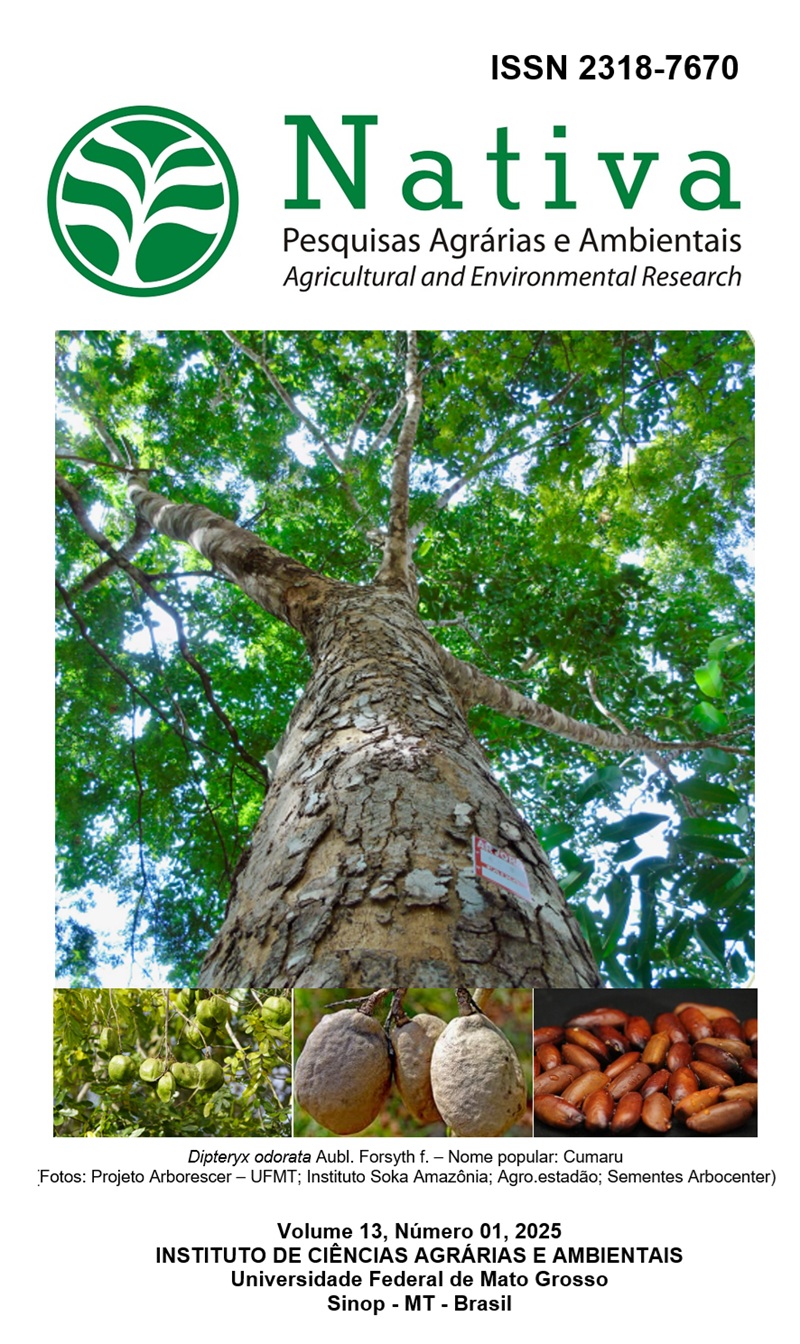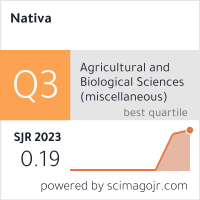THE FEASIBILITY OF UTILIZING HYDROGEN FUEL CELLS IN LIVESTOCK SHIPS TO MITIGATE GREENHOUSE GAS EMISSIONS
DOI:
https://doi.org/10.31413/nat.v13i1.19281Palavras-chave:
climate change, International Maritime Organization, zero emissions livestock shipsResumo
Global warming and air pollution are undoubtedly the major issues of our time. As livestock is considered the main source of protein and dairy products and one of the main food sources for humanity, in some regions of the world, livestock vessels serve as the main logistical means of transportation. Reducing emissions from vessels is vital to ensure animal welfare and livestock health. The vessel MV Ganado Express was chosen to evaluate the overall emissions resulting from the main engine during a 24-hour navigation period under full engine load. This study aims to develop an approach to reduce greenhouse gas emissions using hydrogen proton exchange membrane fuel cells as an alternative to the conventional fossil fuel-powered main engine. The study indicates that replacing the ship's conventional main engine with hydrogen proton exchange membrane fuel cells can mitigate CO2 emissions by 10,200 kg, NOx by 1,637 kg, and SOX by 66 kg during a 24-hour sailing period under an engine load of 6,090 kW. During the same sailing conditions, the fuel consumption reduction when using hydrogen proton exchange membrane fuel cells is 62% lower than the fuel consumption when using a conventional diesel engine.
Keywords: climate change; International Maritime Organization; zero emissions livestock ships.
Viabilidade da utilização de células de combustível de hidrogênio em navios de transporte de gado para mitigar as emissões de gases de efeito estufa
RESUMO: O aquecimento global e a poluição do ar são, sem dúvida, os grandes problemas atuais. Como o gado é considerado a principal fonte de proteína e laticínios e uma das principais fontes de alimento da humanidade, em alguns regioes do mundo, os navios de gado servem como os principais meios logisticos de transporte. Reduzir as emissões dos navios é vital para garantir o bem-estar animal e a saúde do gado. O navio MV Ganado Express foi escolhido para avaliar as emissões gerais resultantes do motor principal durante um período de navegação de 24 horas sob carga total do motor. Este estudo visa desenvolver uma abordagem para reduzir as emissões de gases de efeito estufa utilizando células de combustível de membrana de troca de prótons de hidrogênio como uma alternativa ao motor principal convencional movido a combustível fóssil. O estudo indica que a substituição do motor principal convencional do navio por células de combustível de membrana de troca de prótons de hidrogênio pode mitigar as emissões de CO2 em 10.200 kg, de NOx em 1.637 kg e de SOX em 66 kg durante o período de navegação de 24 horas sob uma carga de motor de 6.090 kW. Durante as mesmas condições de navegação, a redução do consumo de combustível durante o uso de células de combustível de membrana de troca de prótons de hidrogênio é 62% menor do que o consumo de combustível durante o uso do motor diesel convencional.
Palavras-chave: mudanças climáticas; Organização Marítima Internacional; navios de gado com emissão zero.
Referências
AL-ENAZI, A.; OKONKWO, E. C.; BIÇER, Y.; AL‐ANSARI, T. A review of cleaner alternative fuels for maritime transportation. Energy Reports, v. 7, p. 1962-1985, 2021. https://doi.org/10.1016/j.egyr.2021.03.036
AMMAR, N. R.; SEDDIEK, I. S. Enhancing energy efficiency for new generations of containerized shipping. Ocean Engineering, v. 215, e107887, 2020. https://doi.org/10.1016/j.oceaneng.2020.107887
BILGILI, L. An assessment of the impacts of the Emission Control Area Declaration and alternative marine fuel utilization on shipping emissions in the Turkish Straits. Journal of ETA Maritime Science, v. 10, n. 3, p. 202-209, 2022. https://doi.org/10.4274/jems.2022.53315
BUBER, M.; TOZ, A. C.; SAKAR, C.; KOSEOGLU, B. Mapping the spatial distribution of emissions from domestic shipping in Izmir Bay. Ocean Engineering, v. 210, e107576, 2020. https://doi.org/10.1016/j.oceaneng.2020.107576
ELKAFAS, A. G.; ELGOHARY, M. M.; SHOUMAN, M. R. Numerical analysis of economic and environmental benefits of marine fuel conversion from diesel oil to natural gas for container ships. Environmental Science and Pollution Research, v. 28, p. 15210-15222, 2021. https://doi.org/10.1007/s11356-020-11639-6
ELMALLAH, M.; ELGOHARY, M. M.; SHOUMAN, M. R. The effect of air chamber geometrical design for enhancing the output power of oscillating water column wave energy converter. Marine Technology Society Journal, v. 57, n. 1, p. 122-129, 2023. https://doi.org/10.4031/mtsj.57.1.14
ELMALLAH, M. The impact of livestock emissions on the maritime sector. Journal of Maritime Research, v. 21, n. 3, e374, 2024a.
ELMALLAH, M.; SHOUMAN, M.; ELGOHARY, M. Numerical study on enhancing the performance of air turbines in oscillating water column wave energy converters. Journal of Maritime Research, v. 21, n. 2, p. 428-435, 2024b.
ELMALLAH, M.; SHOUMAN, M.; ELGOHARY, M. Reduction of the methane emissions on livestock ships to mitigate greenhouse gas emissions and promote future maritime transport sustainability. Nativa, v. 12, n. 3, p. 551-558, 2024c. https://doi.org/10.31413/nat.v12i3.18180
ELMALLAH, M.; SHOUMAN, M.; ELGOHARY, M. M. Reducing methane emissions on livestock ships in order to mitigate greenhouse gas emissions and promote future maritime sustainability. TransNav - The International Journal on Marine Navigation and Safety of Sea Transportation, v. 18, n. 4, p. 797-804, 2024d. https://doi.org/10.12716/1001.18.04.05
ELMALLAH, M. Contributions to decrease noxious emissions and develop environmental sustainability in seafaring. International Journal of Science and Research Archive, v. 14, n. 3, p. 246-252, 2025a. https://doi.org/10.30574/ijsra.2025.14.3.0671
ELMALLAH, M. Experimental study to investigate the effect of using a conical air chamber design in OWC wave energy converters. International Journal of Science and Research Archive, v. 14, n. 3, p. 214-221, 2025b. https://doi.org/10.30574/ijsra.2025.14.3.0667
ELMALLAH, M. Experimental study to investigate the effect of using a cylindrical air chamber design in OWC wave energy converter. International Journal of Science and Research Archive, v. 14, n. 3, p. 206-213, 2025c. https://doi.org/10.30574/ijsra.2025.14.3.0666
ELMALLAH, M. Experimental study to optimize the efficiency of the Oscillating Water Column wave energy converter by enhancing the air chamber design. International Journal of Science and Research Archive, v. 14, n. 3, p. 196-205, 2025d. https://doi.org/10.30574/ijsra.2025.14.3.0665
ELMALLAH, M. Numerical study to investigate the effect of using a conical air chamber design in OWC wave energy converter. International Journal of Science and Research Archive, v. 14, n. 3, p. 238-245, 2025e. https://doi.org/10.30574/ijsra.2025.14.3.0670
ELMALLAH, M. Numerical study to optimize the efficiency of the OWC wave energy converter. International Journal of Science and Research Archive, v. 14, n. 3, p. 222-229, 2025f. https://doi.org/10.30574/ijsra.2025.14.3.0668
ELMALLAH, M. Fuel management systems and its applications on green energy. International Journal of Science and Research Archive, v. 14, n. 3, p. 230-237, 2025g. https://doi.org/10.30574/ijsra.2025.14.3.0669
European Environment Agency. Emissions of air pollutants from transport. 2021. Available on: https://www.eea.europa.eu/data-and-maps/indicators/transport-emissions-of-air-pollutants-8/transport-emissions-of-air-pollutants-8
FAZLOLLAHI, S.; MARÉCHAL, F. Multi-objective, multi-period optimization of biomass conversion technologies using evolutionary algorithms and mixed integer linear programming (MILP). Applied Thermal Engineering, v. 50, n. 2, p. 1504-1513, 2013. https://doi.org/10.1016/j.applthermaleng.2011.11.035
FAZLOLLAHI, S.; MANDEL, P.; BECKER, G.; MARÉCHAL, F. Methods for multi-objective investment and operating optimization of complex energy systems. Energy, v. 45, n. 1, p. 12-22, 2012. https://doi.org/10.1016/j.energy.2012.02.046
FITZGERALD, W. B.; HOWITT, O. J.; SMITH, I. J. Greenhouse gas emissions from the international maritime transport of New Zealand’s imports and exports. Energy Policy, v. 39, n. 3, p. 1521-1531, 2011. https://doi.org/10.1016/j.enpol.2010.12.026
GOLDSWORTHY, L.; GOLDSWORTHY, B. Modelling of ship engine exhaust emissions in ports and extensive coastal waters based on terrestrial AIS data - An Australian case study. Environmental Modelling & Software, v. 63, p. 45-60, 2014. https://doi.org/10.1016/j.envsoft.2014.09.009
HUAN, T.; FAN, H.; LEI, W.; GUO-QIANG, Z. Options and evaluations on propulsion systems of LNG carriers. In: SERPI, A.; PORRU, M. (Eds). Propulsion Systems, IntechOpen eBooks, 2019. https://doi.org/10.5772/intechopen.82154
HWANGBO, S.; LEE, I.; HAN, J. Mathematical model to optimize design of integrated utility supply network and future global hydrogen supply network under demand uncertainty. Applied Energy, v. 195, p. 257-267, 2017. https://doi.org/10.1016/j.apenergy.2017.03.041
JOUNG, T.; KANG, S.; LEE, J.; AHN, J. The IMO initial strategy for reducing Greenhouse Gas (GHG) emissions, and its follow-up actions towards 2050. Journal of International Maritime Safety, Environmental Affairs, and Shipping, v. 4, n. 1, p. 1-7, 2020. https://doi.org/10.1080/25725084.2019.1707938
LIU, Y.; GE, Y.; TAN, J.; FU, M.; SHAH, A. N.; LI, L.; JI, Z.; DING, Y. Emission characteristics of offshore fishing ships in the Yellow Bo Sea, China. Journal of Environmental Sciences, v. 65, p. 83-91, 2017. https://doi.org/10.1016/j.jes.2017.02.020
MERSIN, K.; BAYIRHAN, İ.; GAZIOGLU, C. Review of CO2 emission and reducing methods in maritime transportation. Thermal Science, v. 23, suppl. 6, p. 2073-2079, 2019. https://doi.org/10.2298/tsci190722372m
ÖZKAYA, E.; KAYA, A. Y.; TONOĞLU, F.; UĞURLU, Ö.; WANG, J. Effect of exhaust emissions produced by fishing vessels on air pollution: a case study of Purse Seine vessels operating in the Black Sea. Journal of ETA Maritime Science, v. 12, n. 2, p. 156-168, 2024. https://doi.org/10.4274/jems.2024.61214
PAPADOPOULOS, C.; KOURTELESIS, M.; MOSCHOVI, A. M.; SAKKAS, K. M.; YAKOUMIS, I. Selected techniques for cutting SOX emissions in maritime industry. Technologies, v. 10, n. 5, e99, 2022. https://doi.org/10.3390/technologies10050099
PARKER, R. W. R.; BLANCHARD, J. L.; GARDNER, C.; GREEN, B. S.; HARTMANN, K.; TYEDMERS, P. H.; WATSON, R. A. Fuel use and greenhouse gas emissions of world fisheries. Nature Climate Change, v. 8, n. 4, p. 333-337, 2018. https://doi.org/10.1038/s41558-018-0117
POWER CELL GROUP. Marine System 200. Available on: https://powercellgroup.com/segments/marine/
REHMATULLA, N.; CALLEYA, J.; SMITH, T. The implementation of technical energy efficiency and CO2 emission reduction measures in shipping. Ocean Engineering, v. 139, p. 184-197, 2017. https://doi.org/10.1016/j.oceaneng.2017.04.029
SANGAIAH, A. K.; TIRKOLAEE, E. B.; GOLI, A.; DEHNAVI-ARANI, S. Robust optimization and mixed-integer linear programming model for LNG supply chain planning problem. Soft Computing, v. 24, n. 11, p. 7885-7905, 2019. https://doi.org/10.1007/s00500-019-04010-6
XING, H.; SPENCE, S.; CHEN, H. A comprehensive review on countermeasures for CO2 emissions from ships. Renewable & Sustainable Energy Reviews, v. 134, e110222, 2020. https://doi.org/10.1016/j.rser.2020.110222
Downloads
Publicado
Edição
Seção
Como Citar
Licença
Copyright (c) 2025 Nativa

Este trabalho está licenciado sob uma licença Creative Commons Attribution-NonCommercial 4.0 International License.
Direitos Autorais para artigos publicados nesta revista são do autor, com direitos de primeira publicação para a revista. Em virtude de a aparecerem nesta revista de acesso público, os artigos são de uso gratuito, com atribuições próprias, em aplicações educacionais e não-comerciais.
A artigos publicados nessa revista, podem ser reproduzidos parcialmente ou utilizados como referência por outros autores, desde que seja cita a fonte, ou seja, a Revista Nativa.
Copyright for articles published in this journal are the authors, with first publication rights granted to the journal. The journal shows open access, and articles are free to use, with proper attribution, in educational and non-commercial.
The articles published in this journal may be reproduced in part or used as a reference by other authors, provided that the source is quoted.






